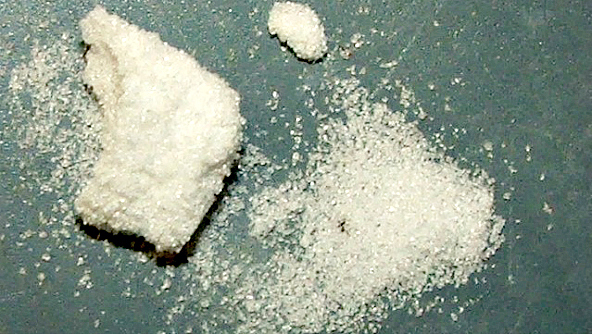Note: OSHA has a substance-specific standard to protect employees from overexposure to Ammonium Chloride. Read on for an overview of the chemical’s health hazards and related safety information.
Get access to the industry-leading database of MSDS / SDS documents by signing up for a free trial.
Ammonium Chloride and its Uses
A white crystalline chemical, ammonium chloride is an odorless, water-soluble salt that can be hazardous in its solid or fume form. Ammonium chloride is primarily used as a component in fertilizers, which is the application for about 90 percent of global production of the substance. Other uses include:
- A flux in preparing metals to be tin-coated, galvanized or soldered
- The production of dry batteries
- Cooling baths in labs
- Photographic contrasting agents in paleontology and archaeology
- An expectorant in cough medicine
- A flavoring agent in licorice
Handling Ammonium Chloride Safely
Exposure to ammonium chloride is moderately hazardous, causing irritation, shortness of breath, cough, nausea, and headache. Most exposure is a result of contact with the fume form of this chemical (ammonium muriate fume and sal ammoniac fume), which is a finely divided particulate dispersed in the air. The fumes are capable of causing severe eye irritation. Consistent exposure can cause an asthma-like allergy or affect kidney function. In the event of accidental contact, get immediate medical attention and follow these first aid measures:
- Skin Contact: Immediately flush skin with water and disinfectant soap and use an emollient on irritated area.
- Eye Contact: Rinse eye(s) with water for at least 15-20 minutes. Protect unexposed eye.
- Ingestion: Rinse mouth thoroughly with water. Do NOT induce vomiting.
- Inhalation: Move to fresh air and administer artificial respiration if needed.
To avoid exposure, it’s important to follow proper safety precautions while handling ammonium chloride in the workplace. Train employees on proper handling and storage to prevent accidents. Wear protective clothing, eyewear (preferably goggles) and impermeable gloves at all times. Be sure to wash your hands after handling. Ensure that adequate ventilation and eyewash stations are provided anywhere that ammonium chloride is being used or handled. Change into clean clothing in case of contamination.
It’s also important to monitor airborne concentrations of ammonium chloride fumes in work areas. The OSHA permissible exposure limit (PEL) for ammonium chloride limits exposure to 10mg/m3, calculated as an 8-hour time weighted average (TWA). If employers cannot bring concentrations of fumes below the PEL, they must provide employees with NIOSH-approved air-purifying particulate filter respirators, provide proper training, and develop and maintain a written respiratory protection program.
In the event of a fire, ammonium chloride will produce poisonous gases including ammonia, hydrogen chloride and nitrogen oxides. Take appropriate fire-fighting precautions.
Ammonium Chloride Storage & Disposal
Ammonium chloride is hygroscopic (it attracts and holds water molecules) and should be stored in tightly closed containers in a dry, well-ventilated space. Keep separated from ammonium nitrate and potassium chlorate; ammonium chloride also reacts violently with strong oxidizers such as permanganates, lead and silver salts, bromium trifluoride, and alkalis and their carbonates.
Not only is this chemical harmful to humans, it is also known to be toxic to aquatic life, so it is essential that steps be taken to prevent environmental releases. Always dispose of ammonium chloride in closed containers, in accordance with federal, state and local environmental regulations, to prevent it from reaching drains, sewers and waterways.
Note: The steps above are general guidelines. For exact safety information and emergency response procedures, review the safety data sheet (SDS/MSDS) for any product or chemical you use. Use our SDS Search tool to find out more about Ammonium Chloride.
If you need help managing your SDS library or your chemical inventory, our Chemical Management software will give you the support you need. You and your entire workforce will have unobstructed 24/7 access to your entire SDS library from anywhere, anytime. Our chemical ingredient indexing capabilities also provide visibility into your inventory at the ingredient level, cross-reference the ingredients against numerous regulatory lists, and summarize key information about regulatory radar screens and established occupational exposure limits (OELs). Our industrial hygiene capabilities can also help you include ammonium chloride in your chemical sampling program by making it easier to select similar exposure groups, coordinate analytical testing, and share results, and can even help manage your respirator fit testing, should you need to provide your employees with respirators.Contact us today to request a demo so you can see for yourself how our Chemical Management software can help you meet regulatory requirements, including the updated HazCom Standard, and keep your entire workforce safe.
